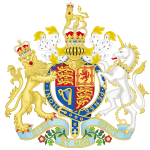- Militia Ordinance
-
The Militia Ordinance was a piece of legislation passed by the Long Parliament of England in March 1642, which was a major step towards the Civil War between the King and Parliament of England. Previously the King had the sole right to appoint the Lord Lieutenants, who were in charge of the county militias (also known as the trained bands). These militias were the only land forces available in peacetime, because England had no regular standing army. As relations between King and Parliament deteriorated, control of the militia became a very controversial issue. After Charles I attempted to arrest five members of the Commons and one Lord in January 1642, Parliament did not trust him and tried to deny him control of any military forces which he could use against them. On 5 March 1642 the anti-royalist majority in the House of Lords passed an Ordinance appointing their choice of Lieutenants, although a royalist minority protested (House of Lords Journal, 5 March 1642). The House of Commons agreed to the Ordinance the same day (House of Commons Journal, 5 March 1642), but according to English custom no legislation could become law until it received the royal assent. The King refused to give his assent to the bill, but on 15 March 1642 Parliament declared that "the People are bound by the Ordinance for the Militia, though it has not received the Royal Assent" (House of Lords Journal, 15 March 1642). This was the first time that Parliament had ever put a law into effect without royal assent. Such an unprecedented assertion of Parliamentary sovereignty made war far more likely.
The Militia Ordinance and the King's Commissions of Array were statements of intent and tests of loyalty but had little practical impact on the raising of armies. The main Parliamentarian army commanded by the Earl of Essex was formed entirely with regular regiments raised from volunteers who enlisted in the summer of 1642. Local trained bands often had divided loyalties or refused to serve outside their own counties. The biggest exception was the London Militia, which was placed under the control of the London Militia Committee by the Militia Ordinance. London was by far the most populous city in England and had a large and well trained militia. The London trained bands marched out to link up with Essex's army at Turnham Green in November 1642, blocking a royalist advance on London. In subsequent years London trained bands regiments were used to reinforce the armies of the Earl of Essex and Sir William Waller, and the Essex trained bands took part in the siege of Reading in 1643. The Long Parliament continued to pass and enforce Ordinances without the royal assent throughout the 1640s. Most of these were declared void after the Restoration, but Charles II continued the excise duty, which was originally brought in by an Ordinance of Parliament in 1643 (Wheeler, 1999:148).
References
- Journal of the House of Commons
- Journal of the House of Lords
- Wheeler, J. S. (1999). The Making of a World Power: War and the Military Revolution in Seventeenth Century England, Stroud: Sutton. ISBN 0750920254.
- 'March 1642: An Ordinance of the Lords and Commons in Parliament, for the Safety and Defence of the Kingdom of England, and Dominion of Wales', Acts and Ordinances of the Interregnum, 1642-1660 (1911), pp. 1-5. URL: http://www.british-history.ac.uk/report.asp?compid=55727. Date accessed: 12 April 2007.
- Text of the Ordinance from the Lords Journal
 United Kingdom legislation
United Kingdom legislationPre-Parliamentary legislation Acts of Parliament by states preceding
the Kingdom of Great BritainActs of the Parliament of England to 1483 · 1485–1601 · 1603–1641 · Interregnum (1642–1660) · 1660–1699 · 1700–1706
Acts of the Parliament of Scotland
Acts of the Parliament of Ireland to 1700 · 1701–1800Acts of Parliament of the
Kingdom of Great Britain1707–1719 · 1720–1739 · 1740–1759 · 1760–1779 · 1780–1800
Acts of Parliament of the United Kingdom of
Great Britain and Ireland and the United
Kingdom of Great Britain and Northern IrelandChurch of England Measures Legislation of devolved institutions Acts of the Scottish Parliament
Acts and Measures of the Welsh Assembly
Acts of the Northern Ireland Assembly / of the Northern Ireland Parliament
Orders in Council for Northern IrelandSecondary legislation Categories:- 1642 in England
- 1642 in law
- English Civil War
- English laws
- Parliament of England
Wikimedia Foundation. 2010.

